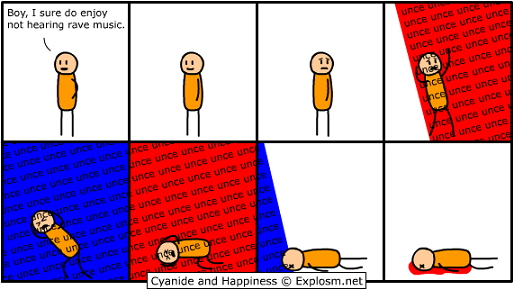Would people identify a difference between 'trancey' polyrhythms and 'funky' polyrhythms?
Both can be good, but there seems to be a distinction between the sort of polyrhythm that dissolves the sense of time and the structure of the 4/4 bar by layering multiple rhythmic 'feels' over an extended period, and the sort that emphasizes them by building up and releasing tension over the course of a bar or so.
And if so, which category would you put stuff in? Funky and Wonky are definitely, er, 'funky', whereas the trancey side covers Steve Reich, yer generic 'tribal drumming', most tribal house and techno etc...

